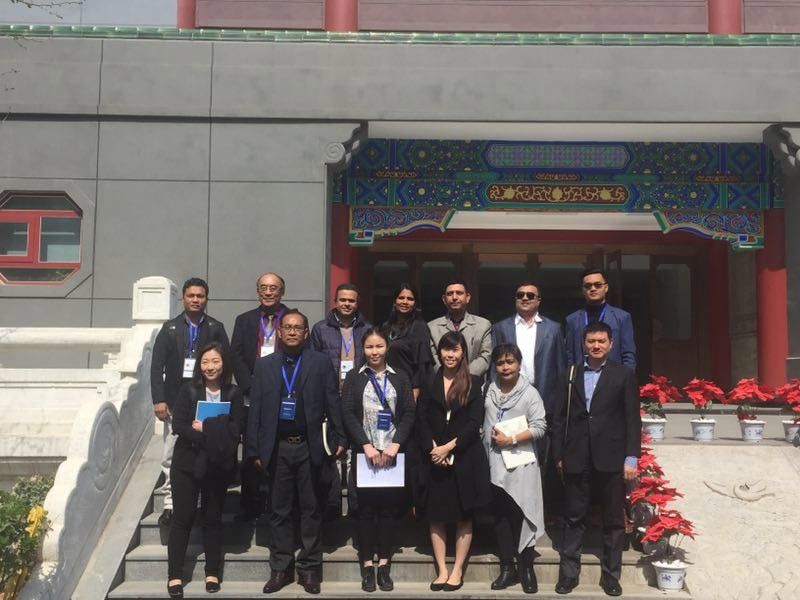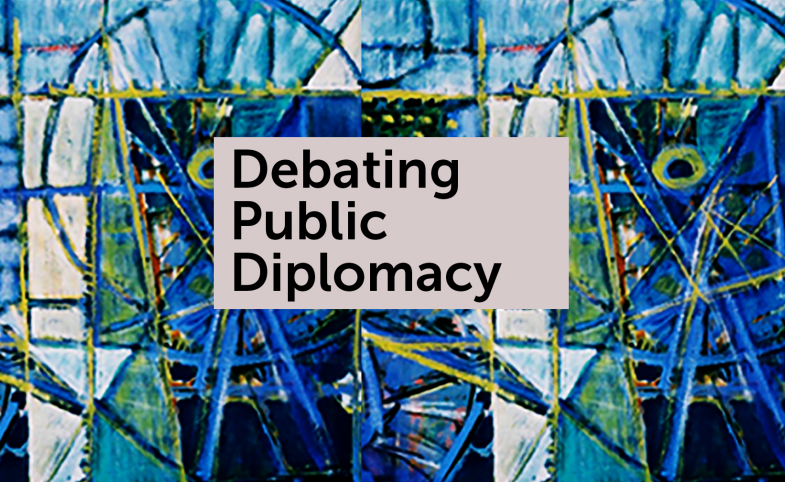Ace June Rell S. Perez, sunstar.com.ph, April 21, 2019 Image from article, with caption: Asian journalists in a recent visit to China. Two delegates are from Sun Star Davao – former EIC now columnist Stella Estremera and social media editor Ace Perez (contributed photo)
Image from article, with caption: Asian journalists in a recent visit to China. Two delegates are from Sun Star Davao – former EIC now columnist Stella Estremera and social media editor Ace Perez (contributed photo)
IN A recent trip in China, the term “Belt and Road Initiative” (BRI) was very dominant in every discussion. It was introduced in 2013 but it is still relatively unfamiliar to some, especially to Filipinos.
And with the recent developments on China-Philippines relations, there is a need for people to understand this connectivity and infrastructure development global project to fully grasp where our foreign affairs is heading.
Understanding BRI
In a discussion with Asian journalists, Zhang Zhixin, counselor and director of Division of Information and Public Diplomacy [JB emphasis], Department of Asian Affairs, Ministry of Foreign Affairs, People’s Republic of China explained that the “Belt and Road Initiative” is a $1 trillion strategic connectivity and infrastructure development project spanning Asia, Europe, and Africa.
It has two elements: the Silk Road Economic Belt, which is focused on linking China to Central Asia, Russia and Europe, through building land transportation routes; and the 21st Maritime Silk Road, which connects China to shipping routes starting from its coast, then passing through South China Sea, the Indian Ocean, then leading up across the globe to Europe.
To date, 124 countries – including the Philippines – and 29 international organizations have signed BRI cooperation agreements with China.
China will stage anew a BRI summit for international cooperation in Beijing on April 25 and 27, to which President Rodrigo Duterte confirmed to attend. The President also attended the first forum in 2017.
Duterte has been supportive and receptive to this initiative as it is seen to complement well with his Build, Build, Build program that seeks to address the country’s infrastructure needs. With his ambitious program, Duterte has sought China’s hand for funding and swift implementation of his key infrastructure projects.
Memorandum of Understanding
In his November 2018 visit to the Philippines, Chinese president Xi Jinping inked 29 documents with the Philippine government – the PH, China Memorandum of Understanding (MOU) on BRI included.
Under the MOU, the two countries agreed to cooperate in infrastructure development; connectivity in transportation, telecommunication, and energy sectors, and other areas of mutual interest; socio-cultural exchanges; finance; and trade and investment.
It was also agreed that both shall hold regular dialogues on "key macroeconomic policies and development strategies"
The MOU also details that the two countries shall work together with “the strictest respect for national laws, rules, and regulations and policies” and be guided with mutual respect for “territorial integrity and sovereignty”.
The MOU is effective until 2022 and may be renewed for another four years.
Fears and Doubts
Despite the seemingly impressive prospects brought by BRI for the Philippines, it did not escape the eyes of the critics tagging the initiative as “debt trap” wherein China offers gigantic loans for projects to countries already under a debt burden to expand its geopolitical clout.
Critics looked at Sri Lanka as an example as it handed over its strategic Hambantota port to China in December 2017 on a 99-year lease after struggling to pay debt to Chinese firms.
In a South China Morning Post report, U.S. Vice-President Mike Pence, Malaysian Prime Minister Mahathir Mohamad, and some Western think tanks posted a warning on Chinese-led loans especially to developing countries.
Mohamad, who paid a visit the Philippines in March, advised to carefully deal with loans from China so as not to fall into debt trap. It can be recalled that the Malaysian leader cancelled in 2018 $22 billion worth of Chinese-funded projects, citing high costs.
The Department of Finance, meanwhile, said the country under the Duterte administration has entered into nine loan agreements with other nations, including two from China as of March 2019.
The two loan agreements is pegged at approximately $260-million loans, this includes P3.69 billion loan for the Chico River Pump Irrigation Project.
Finance Secretary Carlos Dominguez III said Philippines’ foreign debt was “very manageable” and that they make sure to fund around 20 percent of these projects.
In a report from Philippine News Agency, loans from China would account for 4.5 percent of the Philippines total debt, while those from Japan would be about 9.5 percent in 2022.
Not a trap
Chinese Academy of International Trade and Cooperation (Caitec) Institute of International Trade deputy director Zhu Caihu said BRI will be built in the basis of consultation, joint efforts, and shared benefits, thus, the argument laid by some on debt trap is a trap in itself.
“When China lends money to these developing countries into these projects, we will have evaluation, consultations for shared benefit and equality. We don’t want this money to go nowhere. If the debt is only used for consumption, then it is not good, but if these debts are used for infrastructure in building railways, ports, and other visible projects, that is the effective way to advance sustainable economic growth,” she said.
Liu Xian of Caitec’s Institute of International Development Cooperation explained that looking at China with historical perspective, debt is inevitable and somehow necessary for developing countries for economies to grow.
Mei Xinyu of Institute of International Trade, for his part said, China also had its fair share of bad experiences in the past.
“China has to make loans from western countries but the loan rate was at high 15 percent and payable within six months. But now we are not offering that high rate (to developing countries),” he said.
Dominguez assured that they are determined not to fall into any debt trap with any lenders, whether it is China or Japan or the US or Filipino lenders.
“No project is financed unless it goes through [a] very rigorous system and approved by the cabinet and the president,” Dominguez said adding Philippines had learned from its debt crisis in the 1970s.
With all these established, fears on debt traps with China or with any foreign and international institution lenders should not be both ignored and sensationalized by any debtor.
The aligned goals of the Philippines with China’s BRI is a move forward towards entering the “golden age of infrastructure” but there remains a need to be cautious on possible risks and explore opportunities attached to Philippine participation in BRI.
The Philippine government should always review carefully before striking loan deals to any parties. No loans should be made unless transparent, fair, and economically viable. As a debtor, it is also our responsibility to pay debts in due time and use loans effectively.
With Philippines’ active participation in BRI, may our leaders always put the Filipinos’ interest first before others especially in a time of an unpredictable geopolitical environment.
Let this be not a zero-sum game but a path to a future with mutual and shared developments.
Original Article








